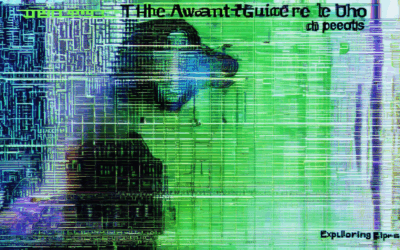Delving into the vibrant world of indie hip hop, where creativity knows no bounds and artistic expression reigns supreme, offers a fascinating glimpse into the ever-evolving landscape of underground hip hop. With its unique blend of raw energy, lyrical dexterity, and innovative production, indie hip hop has carved out a distinct niche for itself, captivating audiences worldwide with its unbridled passion and dedication to the craft. From the pioneering artists who paved the way to the modern-day trailblazers pushing the boundaries of the genre, indie hip hop is a rich tapestry of sound, waiting to be explored and celebrated.
As the genre continues to grow in popularity, fans and critics alike are left wondering what sets indie hip hop apart from its mainstream counterparts. Is it the raw, unpolished energy of its early days, or the sophisticated lyricism and production that define its contemporary sound? One thing is certain – indie hip hop is here to stay, and its influence on the wider music landscape is undeniable.
In this comprehensive review of the genre and its best artists, we’ll delve into the heart of indie hip hop, exploring its history, defining characteristics, and the talented individuals who bring it to life. Whether you’re a seasoned fan or just discovering the joys of underground hip hop, join us on this journey into the world of indie hip hop, where creativity knows no bounds and the possibilities are endless.

Understanding Indie Hip Hop
Indie hip hop, also referred to as underground hip hop, is a subgenre of hip hop music characterized by its independence from mainstream commercial channels. This genre has gained significant popularity over the years, particularly among fans who appreciate authentic and raw talent.
Key Characteristics
- Independent artists and labels: Indie hip hop often features artists who self-release their music or collaborate with independent labels.
- Lack of mainstream support: Unlike mainstream hip hop, indie hip hop rarely receives heavy promotion or airplay on major radio stations.
- Raw and unpolished sound: Indie hip hop artists often focus on creating a genuine, unfiltered sound that reflects their personal experiences and emotions.
History and Evolution
The roots of indie hip hop date back to the early days of hip hop culture, when artists began experimenting with DIY production techniques and releasing music independently. Over time, this movement evolved into distinct subgenres, such as boom bap and conscious rap.
Subgenres and Influences
- Boom bap: Characterized by its jazzy samples and live instrumentation, boom bap emerged in the mid-1990s and influenced a generation of indie hip hop artists.
- Conscious rap: Focusing on socially conscious lyrics and storytelling, conscious rap has been a staple of indie hip hop since its inception.
- Trap and drill: These subgenres have gained popularity in recent years, blending elements of indie hip hop with trap beats and streetwise lyrics.
Impact and Legacy
Indie hip hop has had a profound impact on the music industry, paving the way for emerging artists and challenging traditional notions of what constitutes “mainstream” hip hop. Its influence can be seen in various genres, from rock to electronic music, and continues to inspire new generations of musicians and fans alike.
Understanding Indie Rap Style
Characteristics and Influences
- Upbeat tempo: Indie rap often features energetic and catchy beats, frequently incorporating elements of electronic dance music.
- Electronic influences: The genre draws inspiration from various electronic genres, such as trap, future bass, and chillhop.
- Lyrical themes: Indie rap frequently explores personal growth, relationships, mental health, and social commentary.
Key Features and Differences
- Accessibility and approachability: Indie rap tends to be more laid-back and less aggressive compared to traditional hip-hop.
- Production quality: Indie rappers often focus on crafting unique, atmospheric soundscapes and melodies.
- Lyrical complexity: While still storytelling-driven, indie rap lyrics may delve deeper into introspection and emotional vulnerability.
Subgenres and Evolution
Over time, indie rap has branched out into various subgenres, such as:
- Mellowcore: Characterized by mellow, jazzy beats and introspective lyrics.
- Chillhop: A fusion of hip-hop and jazz, often featuring relaxing, instrumental tracks.
- Lo-fi hip hop: A genre marked by its DIY ethos and often, nostalgic value.
Artists and Their Contributions
- Jinsang: Known for his emotive, lo-fi productions and soothing melodies.
- A pioneer of the mellowcore movement, blending hip-hop with jazz and R&B elements.
- J Dilla: A highly influential producer who helped shape the sound of underground hip-hop.

The Best Hip Hop Websites
- Complex: Complex.com offers in-depth coverage of hip-hop news, culture, and music, featuring interviews with prominent artists and industry professionals.
- XXL: XXLmag.com provides extensive coverage of hip-hop, including album reviews, artist profiles, and live concert updates.
- The Fader: TheFader.com showcases emerging talent and established artists alike, offering exclusive interviews, music releases, and behind-the-scenes content.
- Pitchfork: Pitchfork.com features a diverse range of hip-hop content, including album reviews, mixtapes, and artist profiles, catering to fans of underground and mainstream genres.
- HotNewHipHop: HotNewHipHop.com aggregates the latest hip-hop news, leaks, and releases, making it a go-to destination for fans seeking the most up-to-date information.
- Highsnobiety: Highsnobiety.com combines fashion, art, and music, featuring exclusive interviews, product drops, and cultural commentary.
- Stereogum: Stereogum.com covers a broad spectrum of hip-hop, including indie and underground artists, offering insightful reviews and feature articles.
These reputable online platforms offer a wealth of information on hip-hop culture, news, and music, catering to various tastes and preferences within the genre.

The Evolution of Old School Hip Hop
Old school hip hop encompasses the early days of rap music, spanning from its inception in the late 1970s to the mid-1980s. During this period, hip hop culture was heavily influenced by African American and Latino communities in New York City, particularly in the Bronx. Key figures such as DJ Kool Herc, Grandmaster Flash, and Afrika Bambaataa played pivotal roles in shaping the genre.
Characteristics of Old School Hip Hop
- Heavy emphasis on DJing and turntablism
- Simple, raw beats and lyrics often focused on social issues
- Early adoption of sampling and scratching techniques
- Emergence of iconic groups like Run-DMC and the Beastie Boys
Pioneering Artists of Old School Hip Hop
- DJ Kool Herc: Often credited as the father of hip hop, his innovative DJing style laid the foundation for future generations.
- Grandmaster Flash: Known for his lightning-fast turntable skills and socially conscious lyrics, he helped define the sound of old school hip hop.
- Afrika Bambaataa: A founding member of the Zulu Nation, he played a crucial role in spreading hip hop culture throughout the world.
- Run-DMC: One of the first successful hip hop groups, they brought the genre into the mainstream with their energetic live performances.
Impact of Old School Hip Hop
- Helped establish hip hop as a legitimate art form
- paved the way for future sub-genres like gangsta rap and trap
- Influenced popular music across genres, including rock and pop
- Provided a platform for marginalized voices to express themselves
Timeless Classics of Old School Hip Hop
- The Sugarhill Gang – Rapper’s Delight
- Grandmaster Flash and the Furious Five – The Message
- Run-DMC – Walk This Way
- Busta Rhymes – Paid in Full
The Golden Age of Hip Hop
The golden age of hip hop refers to the period between approximately 1985 and 1995 when hip hop music experienced significant growth and development. During this era, hip hop culture began to transcend its underground roots and enter the mainstream, paving the way for future generations of artists.
Characteristics of the Golden Age
- Unprecedented creativity: Artists were free to experiment with new sounds, styles, and themes, leading to a proliferation of innovative beats, flows, and lyrics.
- Mainstream crossover: Hip hop started to gain recognition beyond its initial niche audience, with artists like Run-DMC and the Beastie Boys achieving commercial success.
- Independence from major labels: Many artists remained independent, allowing them to maintain creative control and avoid the constraints imposed by major record labels.
- Diversification of genres: The golden age saw the emergence of various sub-genres, such as gangsta rap, conscious rap, and old-school hip hop, each contributing to the rich tapestry of hip hop music.
Key Figures and Releases
- Run-DMC – “Raising Hell” (1986): A groundbreaking album that brought hip hop to the masses, featuring hits like “Walk This Way.”
- Public Enemy – “It Takes a Nation of Millions to Hold Us Back” (1988): A powerful and influential album that addressed social issues and became a classic of the genre.
- Boogie Down Productions – “Edutainment” (1989): A critically acclaimed album that showcased KRS-One’s storytelling ability and socially conscious lyrics.
- Notorious B.I.G. – “Ready to Die” (1994): A debut album that catapulted Biggie Smalls to fame, cementing his place among hip hop legends.
Legacy of the Golden Age
The golden age of hip hop laid the foundation for the diverse and vibrant music landscape we enjoy today. Its impact can be seen in the many successful artists who followed, as well as the continued evolution of hip hop culture. The era’s emphasis on creativity, independence, and self-expression has inspired countless musicians and fans alike, solidifying its status as a pivotal moment in hip hop history.
The Greatest Rapper of All Time
The debate over who is the greatest rapper of all time has been ongoing for decades, with various artists being touted as the best due to their unique styles, lyrical prowess, and impact on the genre. Here are some of the most influential rappers in history:
- Tupac Shakur: Known for his powerful lyrics and impassioned delivery, Tupac is widely regarded as one of the greatest rappers of all time. His music addressed social issues, police brutality, and the struggles faced by African Americans.
- The Notorious B.I.G.: Biggie Smalls was another prominent figure in the East Coast hip-hop scene, known for his smooth flow and vivid storytelling ability. His music often reflected the harsh realities of life in Brooklyn.
- Nas: A pioneer of the New York City hip-hop scene, Nas is celebrated for his poetic lyrics and complex rhyme schemes. His debut album “Illmatic” is often cited as one of the greatest hip-hop albums of all time.
- Jay-Z: With a career spanning over two decades, Jay-Z has established himself as one of the most successful rappers in history. He has released numerous critically acclaimed albums and has collaborated with a wide range of artists.
- Kendrick Lamar: A contemporary rapper known for his socially conscious lyrics and fusion of jazz and funk influences, Kendrick Lamar has become a leading voice in modern hip-hop. His albums have consistently received critical acclaim and commercial success.
These artists have made significant contributions to the world of hip-hop, pushing the boundaries of lyrical complexity, musical innovation, and cultural relevance. While opinions may vary, they are undoubtedly among the greatest rappers of all time, leaving an indelible mark on the genre.




0 Comments